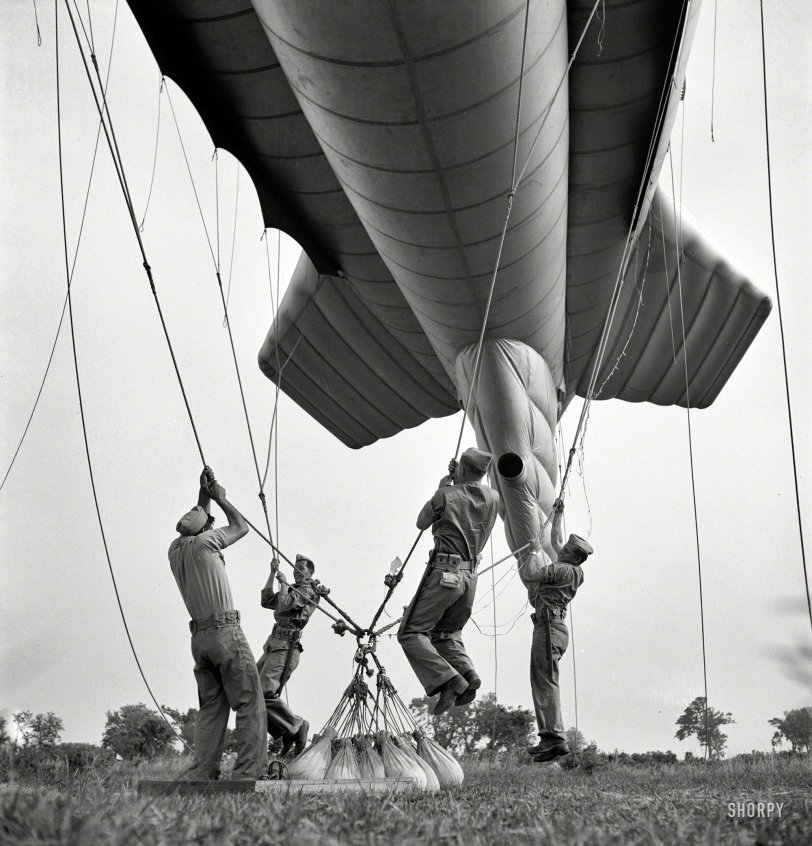


Framed or unframed, desk size to sofa size, printed by us in Arizona and Alabama since 2007. Explore now.
Shorpy is funded by you. Patreon contributors get an ad-free experience.
Learn more.

- Freeze Frame
- Texas Flyer wanted
- Just a Year Too Soon
- WWII -- Replacing men with women at the railroad crossing.
- Yes, Icing
- You kids drive me nuts!
- NOT An Easy Job
- I wonder
- Just add window boxes
- Icing Platform?
- Indiana Harbor Belt abides
- Freezing haze
- Corrections (for those who care)
- C&NW at Nelson
- Fallen Flags
- A dangerous job made worse
- Water Stop
- Passenger trains have right of way over freights?
- Coal
- Never ceases to amaze me.
- Still chuggin' (in model form)
- Great shot
- Westerly Breeze
- For the men, a trapeze
- Tickled
- Sense of loneliness ...
- 2 cents
- Charm City
- What an Outrage
- Brighton Park
Print Emporium
How to Bed a Balloon: 1942

May 1942. Continuing the series last seen here. "Parris Island, South Carolina. Special Marine units learning how to bed down a big barrage balloon." Photos by Pat Terry and Alfred Palmer for the Office of War Information. View full size.
Bayonets?
Humm...you would they would get in the way; especially given how long they are.
Limited Utility
One sees what seem to be hundreds of these things in wartime shots of British cities, the Normandy invasion fleet, etc. Though of some use in deterring low-level strafing runs by fighter aircraft, they would seem to have been less than useful against high-level bombing runs or even a skilled dive-bomber attack (say by Stukas, which the Germans had in plenitude). Still, when one has a near-monopoly on helium, one can afford to indulge in defensive systems of marginal utility, and the morale-boosting effect on the defended population or activity cannot easily be discounted.
Bombers?
Was the U.S. particulary worried about bombers coming from Japan? seems like a long way in 1942, on the prairies in Canada we, like the U.S. worried about incendiary balloons coming over on the newly discovered jetstream, seemed the Japanese had used it as a mode of transporting these devil balloons over to North America.
Signal Hill oil fields
We lived near Long Beach, California, during WWII and there were many barrage balloons over the oil derricks near Signal Hill. There were cables from the balloons to the ground to deter low flying enemy aircraft which might bomb the oil wells. Sometimes we could see spotlights going back and forth in the sky. It was always an eerie sight, especially at night.
























On Shorpy:
Today’s Top 5